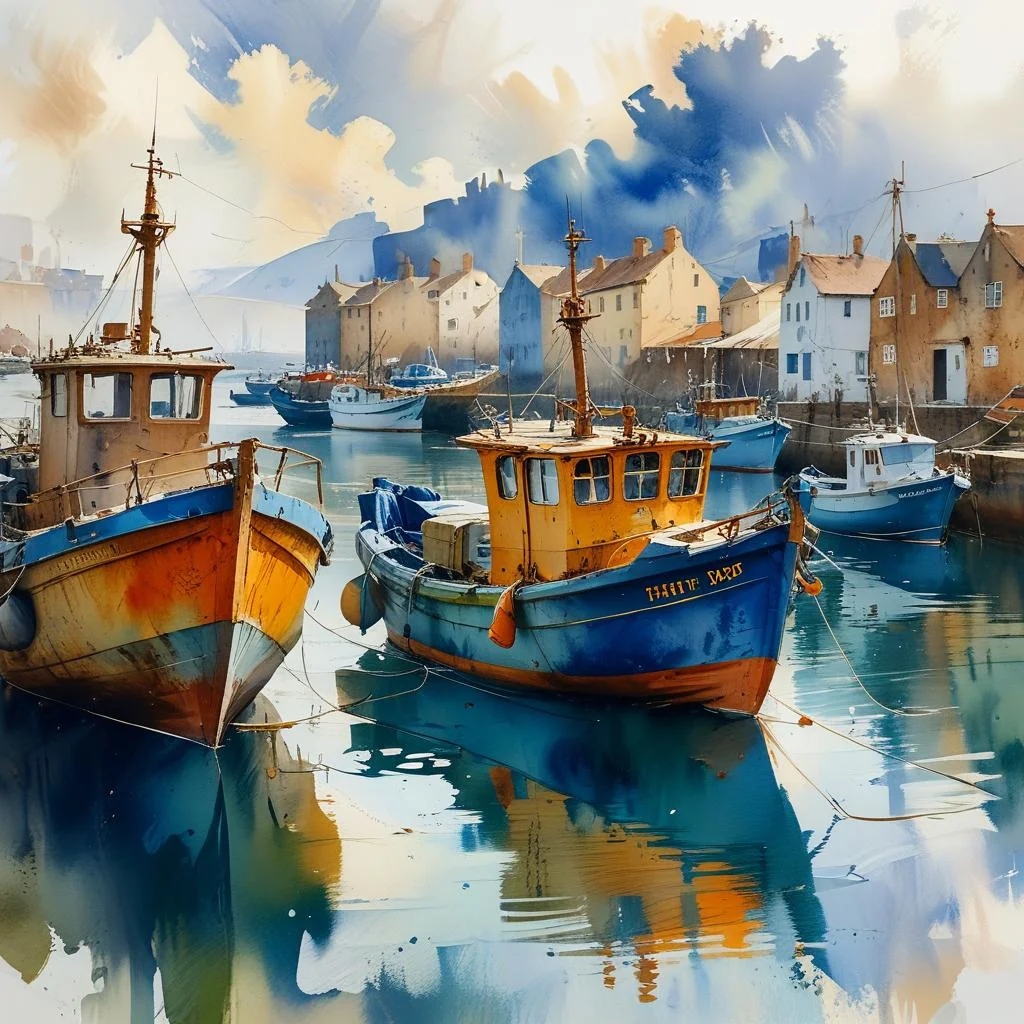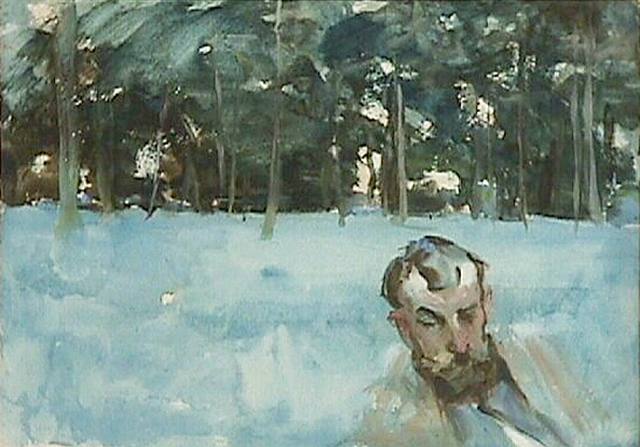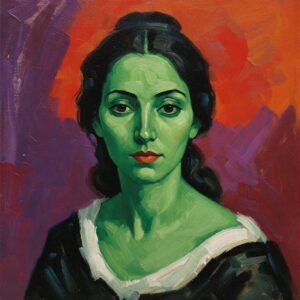
Henri Matisse transformed the art world with his revolutionary approach to color and form. When you look at a Matisse painting, you’re immediately struck by the bold colors, simplified shapes, and sense of joy that radiates from his work, all hallmarks of the distinctive Matisse art style. Understanding this style opens up a fascinating journey through one of the most influential artistic careers of the 20th century. From his early experiments with Fauvism to his revolutionary paper cut-outs created late in life, Matisse constantly pushed the boundaries of what art could be while maintaining his distinctive vision – see his Top 10 paintings.
Key Points:
- Matisse was a leader of the Fauvist movement, known for its wild, non-naturalistic colors
- His art evolved through several distinct phases but always emphasized color and form
- Matisse’s paper cut-outs represent a revolutionary technique developed late in his career
- His influence extends throughout modern art and contemporary design
- Matisse prioritized expressing emotions and creating harmony through his art
Who Was Henri Matisse?
Henri Matisse (1869-1954) was a French artist who began his career as a lawyer before discovering his passion for art while recovering from an illness. This late start didn’t prevent him from becoming one of the most revolutionary artists of his time. Initially trained in more traditional techniques, Matisse quickly developed his own artistic vision that prioritized expression over realistic representation.
What made Matisse special wasn’t just his technical skill, but his willingness to break rules and follow his own artistic instincts. Even when critics were hostile to his bold new approach, Matisse continued exploring color and form in ways that would eventually change how we think about art.
Understanding Matisse Art Style: The Fauvist Revolution
The first major breakthrough in Matisse’s career came with Fauvism, a movement that lasted from approximately 1905 to 1908. The name “Fauvism” comes from the French word “fauves,” meaning “wild beasts” – a nickname given by a critic shocked by their bold use of color.
During this period, Matisse and fellow artists abandoned traditional color rules, instead using vibrant, non-naturalistic colors to express emotions and create visual impact. A tree might be red, a face could be green, and the sky could appear orange – all in service of creating a powerful artistic experience rather than accurately depicting reality.
“When I put down a green, it doesn’t mean grass; when I put down a blue, it doesn’t mean the sky.”
Henri Matisse

Key characteristics of Matisse’s Fauvist style include:
- Bold, non-natural colors used expressively
- Simplified forms and flattened perspective
- Visible brushwork that adds energy to the composition
- Strong outlines and contrasts between colors
- An emphasis on the emotional impact of color combinations
Works like “Woman with a Hat” (1905) and “The Green Stripe” (1905) showcase Matisse’s revolutionary approach during this period. Instead of trying to capture exactly what he saw, Matisse used color to communicate feeling and create visual harmony.
Matisse’s Decorative Period
After Fauvism, Matisse entered what many call his “decorative period,” where he incorporated patterns and decorative elements inspired by Islamic art, textiles, and his travels to North Africa. During this time, he created works like “The Red Studio” (1911) and “The Dance” (1910), which feature flattened perspective and large areas of bold color.
This period showed Matisse’s growing interest in creating harmonious compositions through careful arrangement of color, pattern, and form. He began to think of painting less as a way to represent the world and more as a way to create a complete sensory experience.
Matisse’s Color Theory and Technique
One of the most important aspects of understanding the Matisse art style is appreciating his revolutionary approach to color. Unlike many artists before him, Matisse didn’t use color primarily to depict how things actually look. Instead, he used color to:
- Create emotional responses
- Build balanced compositions
- Direct the viewer’s eye
- Express his own feelings about his subjects
Matisse carefully studied how colors interact with each other. He understood that placing complementary colors (like red and green, or blue and orange) next to each other creates visual excitement and energy. He also knew that similar colors create a sense of harmony and peace.
What makes Matisse special is how he balanced these effects, creating works that feel both energetic and harmonious at the same time. This delicate balance is one reason his art continues to feel fresh and exciting even today.
The Revolutionary Cut-Outs
Perhaps the most innovative phase of Matisse’s career came toward the end of his life when illness confined him to a wheelchair. Rather than give up making art, Matisse developed a new technique that would become one of his most significant contributions: the paper cut-outs.
Using scissors and paper painted with bright colors, Matisse would cut shapes directly—drawing with scissors, as he called it—and arrange them into compositions. This technique allowed him to combine drawing and color in a single gesture.
These works, like “The Snail” and pieces from his book “Jazz,” represent a culmination of Matisse’s artistic journey. They combine his masterful understanding of color with simplified forms and a childlike sense of joy and playfulness.
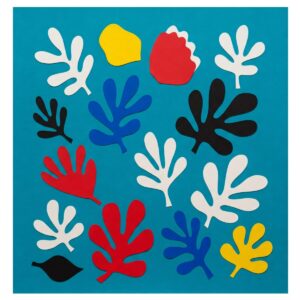
How Matisse Created His Cut-Outs
To create his cut-outs, Matisse followed a process that was both simple and sophisticated:
- His assistants would paint sheets of paper in solid, vibrant colors using gouache
- Matisse would cut shapes directly from these colored papers using large scissors
- He would arrange and rearrange these shapes on a white background until satisfied
- The shapes would be pinned in place temporarily, allowing for adjustments
- Once the composition was finalized, the shapes would be glued down
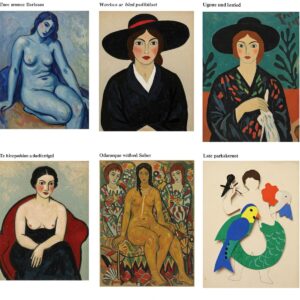
This process allowed Matisse to work quickly and intuitively, making changes until the composition felt perfectly balanced. The resulting works combine the spontaneity of drawing with the solidity of painting.
Matisse’s Artistic Evolution: From Paint to Paper
Matisse’s artistic journey shows remarkable evolution while maintaining consistent themes and concerns. From his early traditional paintings to his final cut-outs, certain elements remain constant: his love of color, his search for balance and harmony, and his desire to create art that expresses joy.
This progression demonstrates how a great artist can continuously reinvent himself while staying true to his core artistic vision. Each phase of Matisse’s career built upon previous explorations while pushing in new directions.
| Period | Years | Key Characteristics | Notable Works |
|---|---|---|---|
| Early Work | 1890-1904 | More traditional, influenced by Impressionism | “Luxe, Calme et Volupté” |
| Fauvism | 1905-1908 | Wild colors, expressive brushwork | “Woman with a Hat,” “The Green Stripe” |
| Decorative Period | 1908-1917 | Patterns, flatter compositions | “The Red Studio,” “The Dance” |
| Nice Period | 1917-1930 | More relaxed, window views, odalisques | “Odalisque with Raised Arms” |
| Return to Simplicity | 1930-1943 | Cleaner lines, preparing for cut-outs | “The Romanian Blouse” |
| Cut-Outs | 1943-1954 | Paper shapes, “drawing with scissors” | “Jazz,” “The Snail,” “Blue Nude” |
Matisse’s Influence on Modern Art and Design
Matisse’s influence extends far beyond fine art. His bold use of color and simplified forms has inspired:
- Interior designers who use “Matisse blue” and bold color combinations
- Fashion designers who incorporate his sense of pattern and color
- Graphic designers who adopt his clean lines and visual harmony
- Architects who think about space and color in new ways
- Contemporary artists still exploring his techniques
His work continues to feel remarkably current, with many contemporary artists citing him as a major influence. The way Matisse balanced sophistication with apparent simplicity makes his work accessible while remaining endlessly fascinating to study.

How to Identify and Appreciate Matisse’s Style
When looking at a Matisse work, pay attention to these elements:
- Color Usage: Bold, often non-naturalistic colors used for emotional effect
- Simplified Forms: Objects and figures reduced to their essential shapes
- Flatness: Limited use of shading or perspective, creating a more decorative quality
- Balance and Harmony: Despite their boldness, compositions feel harmonious
- Joy and Vitality: A sense of energy and celebration of life
Appreciating Matisse doesn’t require an art history degree. Simply notice how the colors make you feel, how your eye moves around the composition, and the sense of joy and life that emanates from his work.
For beginners interested in exploring different art styles, Matisse offers a perfect entry point. His work is visually striking and emotionally accessible while containing enough sophistication to reward deeper study.
Understanding Matisse Art Style: Key Takeaways
Henri Matisse revolutionized modern art through his bold use of color, simplified forms, and inventive techniques. From his early experiments with Fauvism to his late-career paper cut-outs, Matisse consistently pushed artistic boundaries while creating work that celebrates life and color.
What makes his art still relevant today is its combination of sophistication and accessibility. A child can enjoy the bright colors and simple shapes of a Matisse cut-out, while art historians continue to discover new depths in his masterful compositions.
By understanding Matisse’s art style, we gain insight not just into one artist’s work, but into a pivotal moment in art history that continues to influence visual culture today.
FAQs About Matisse’s Art Style
Who influenced Henri Matisse?
Matisse was influenced by various artists including the Impressionists, Post-Impressionists like Van Gogh, and Japanese prints. Later in life, he drew inspiration from Islamic art and African textiles. His philosophy professor, Gustave Moreau, also played a significant role in encouraging Matisse to develop his unique artistic voice.
What is the Fauvism art movement?
Fauvism was a short-lived but influential art movement (approximately 1905-1908) led by Matisse and André Derain. It prioritized bold, non-naturalistic colors and simplified forms over realistic representation. The name comes from “les fauves” (the wild beasts), a nickname given by critic Louis Vauxcelles shocked by their radical use of color.
Why is Matisse famous for his use of color?
Matisse revolutionized how artists think about color by using it expressively rather than realistically. He understood color relationships intuitively and used bold combinations to create emotional impact and visual harmony. His approach to color liberated later artists to explore color’s emotional and compositional possibilities beyond realistic representation.
What materials did Matisse use?
Throughout his career, Matisse used various materials including oil paint, gouache, charcoal, and pencil. In his later years, he became famous for his cut-paper collages using gouache-painted paper, scissors, and glue. He also created sculptures, book illustrations, and designs for stained glass windows.
When did Matisse start creating paper cut-outs?
Matisse began seriously exploring the cut-out technique in the early 1940s when health problems confined him to a wheelchair. After surgery in 1941, he found it difficult to stand at an easel for long periods. The cut-outs allowed him to continue creating art despite his physical limitations, leading to some of his most innovative work in the final decade of his life.


